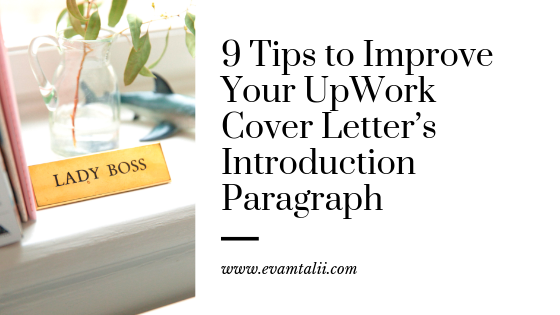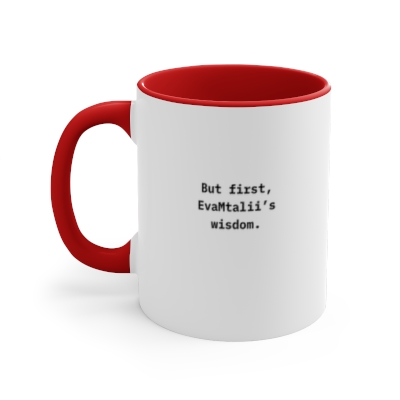
How much attention do you give the introductory segment of your freelance article pitch or UpWork cover letter?
If you are like most freelancers, the answer is little to none.
After all, it’s only a short paragraph anyway. How much time should a freelancer spend writing something so short and insignificant?
And isn’t an “introduction” just a transitional element so you can get on with the rest of your pitch or cover letter?
You might be shocked to see how much time we spend at Folks with Pens evaluating the introductory segments of all articles we pitch or cover letters we send to job posters on UpWork or Fiverr.
It is only a small segment of our page long cover letter, but like every facet of our freelance pitches or cover letters, it should be exceptional, deliberate and strategic.
We deliberate on every word we use. We assess the potential energy we could bring. We consider how phrases used might sound or be interpreted by both existing and potential clients.
In some ways, developing a one-paragraph introduction at Folks with Pens is as stressful as the rest of the five-paragraph cover letter or pitch!
The introduction is a challenging element of the cover letter or pitch.
Part of the difficulty is the allotted space.
In UpWork for instance, the job poster can only see the first 2 to 3 sentences of your cover letter.
To read the rest of the cover letter, they have to click-through.
Most potential clients or job posters are sticklers about time, so when an introduction doesn’t prompt or motivate them to click-through to the rest of your cover letter, it impacts your entire application or pitch. The other issue is the amount of information we hope to communicate.
There’s information for guests, announcements and more.
So how can you make your cover letter or freelance pitch exceptional, deliberate, strategic and short? Here are a few tips from our experience:
What's Covered in This Article
Manage your content.
Staying within the content limit is important.
If we use a lot of fluff at the introduction, it pushes the most important stuff further down and the job poster or potential client may never get to see it.
Give the introduction your best short with the goal of catching the job posters’ eye and compelling them to click-through and read the rest of the pitch or cover letter.
Failure to cover the most significant elements of what makes you the special freelancer that you are, hurts the entire application.
The overall cover letter/pitch is only as good as its interdependent segments.
Be intentional at introducing yourself.
Remember, every waking moment there are new clients on UpWork or wherever your target audience is found, and they probably do not know much about the entire freelance phenomenon.
At Folks with Pens, in every cover letter, we specifically introduce ourselves to our potential clients, rehash what makes us special and tell them what to expect when working with us.
Preemptively answer their questions.
Most clients (and every living soul) wants to know: How long will it take?
Don’t make them wonder the entire time—tell them up front.
Clients want to know who will be working on the project – are you the sole provider or will you work as part of a team. They want to know what your method is like.
They want to know who YOU are as a freelancer.
We try to anticipate their questions and provide answers up front so they can relax and enjoy their engagement at Folks with Pens.
I’m STARTLED by the number of freelancers who don’t do this!
Don’t be among them!
Tell clients what to expect.
Limit number of experiences showcased.
The introduction is not a portfolio segment. You have many other mediums for showcasing your experiences (UpWork portfolio, personal blog, attachments section, etc.).
We intentionally limit showcasing our experiences and expertise, only highlighting what we feel is absolutely necessary.
In most cases, our only “expertise” is dedicated to a next step for the potential client.
For instance, using Folks with Pens as an example, I would mention that we have been focusing solely on business plans but are now expanding to writing poems.
This gives me an opportunity to celebrate, and cast vision with the potential client.
Assess your words … all of them.
We are fussy at Folks with Pens, picking apart every single phrase we use.
That certainly results into some “flimsy debate,” but it is worth it.
The introduction is not immune to our assessment.
We want to ensure that the words and phrases we use communicate exactly what we desire.
Remember, most clients make an impression about your capabilities based on your cover letter or pitch (especially the introduction).
Make sure the phrases and content of your introduction tell who you are and what solution you will provide for the client.
Define your target.
Make sure the introduction is targeted to the client’s challenge or problem that you intent to solve.
Hint: Your target is the problem your client is facing.
Be deliberate. Be strategic. Target your introduction and the phrases you use. Make every one count.
Use appropriate language.
This might seem obvious, but it’s important.
If the project you are applying for is technical, you should use technical jargon.
If you deal with business strategy development (like Folks with Pens), use business language.
Your language and writing communicates something to your potential client.
Don’t try a style that you can’t pull off. Industry matters.
Bottom line, be you, but be the best version of you there could be for your potential clients.
When in doubt, keep it simple.
Be likable.
I’m not sure how to illustrate this.
I’m not even sure if I always pull this successfully.
But I know it’s really critical.
I try to build rapport with the client with a salutation.
I intentionally make them want to click-through to the rest of my profile.
When appropriate, I use a relevant quote or ask a question.
But in the end, the goal is to make a positive first impression. Be the freelancer they’d want to hang out with.
Put your best foot forward.
I saved this for last because it’s the one most freelancers seem to ignore.
If you are not sure about your expertise when it comes to business proposals, cover letters or freelance pitches, for instance, then you should either learn how to do it or seek help.
Thank God for the internet, pretty much everything you need to help with cover letter writing is available and mostly for free.
Read.
Ask questions.
The primary purpose of the introduction is navigation, and is therefore mission critical.
Navigation and tone is the primary purpose of the introduction.
So put your best foot forward and give it your best short.
How about that?
Nine things to consider for a one-paragraph portion of your cover letter.
I told you we were fussy!
Like you, I believe anything important must be assessed and made better, and the cover letter introduction certainly fits this description.
If you communicate in the introduction section of your cover letter/pitch or have seen some powerfully written ones (or poorly written ones), go ahead and contribute to the discussion.
Did I miss anything? I’d love to know so I can improve our work at Folks with Pens!
Thanks in advance for sharing.




